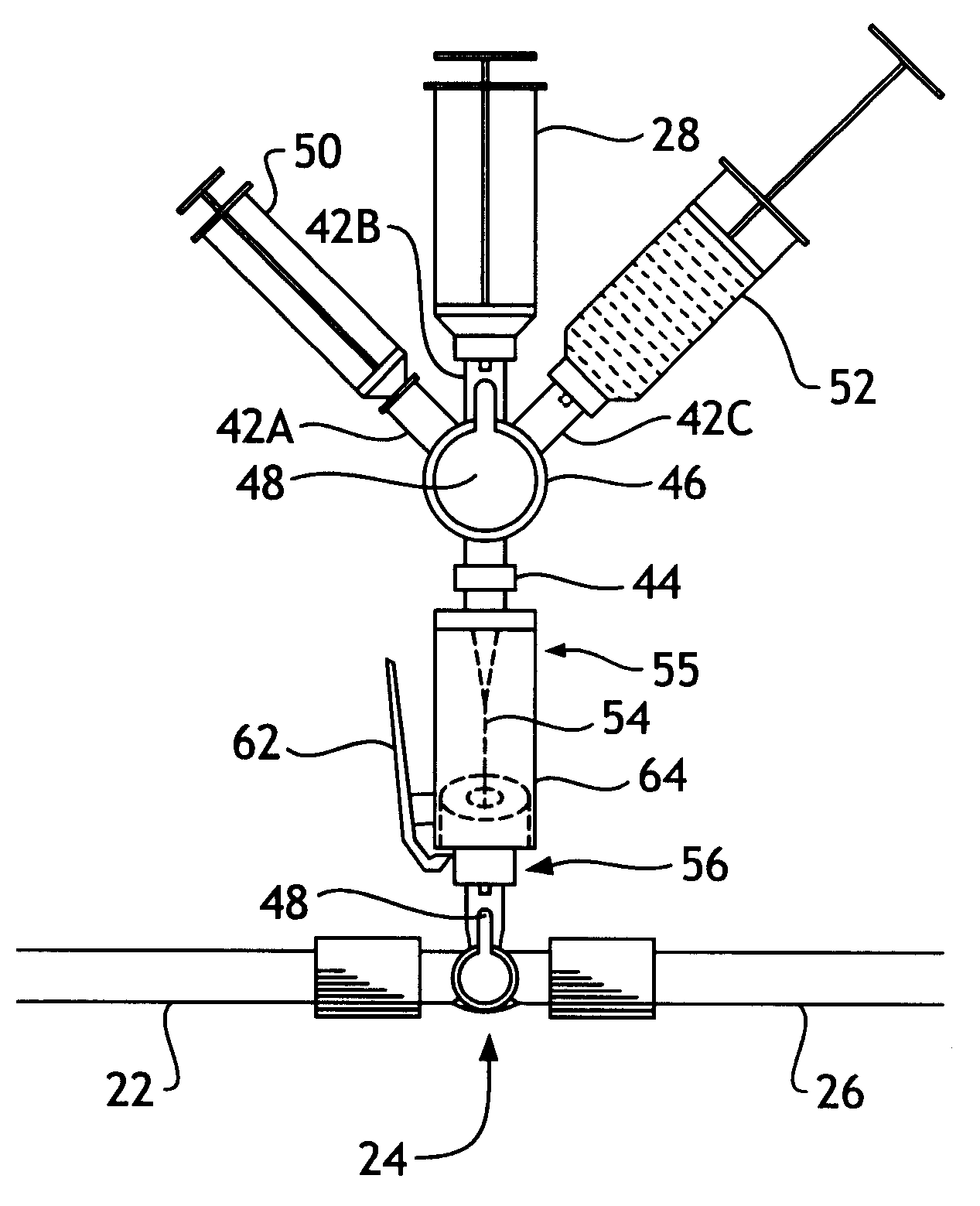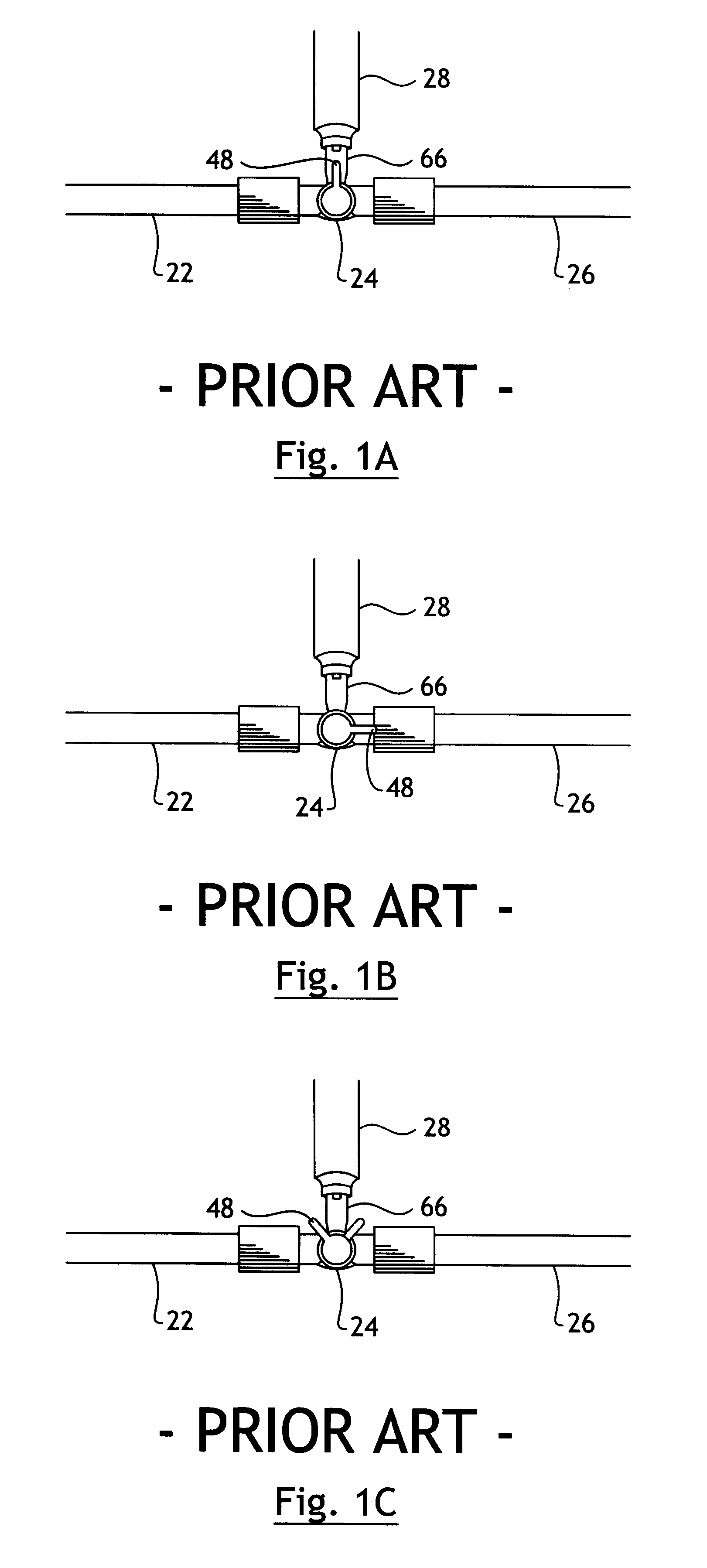Blood collection kit
- Summary
- Abstract
- Description
- Claims
- Application Information
AI Technical Summary
Problems solved by technology
Method used
Image
Examples
Embodiment Construction
FIG. 3 shows a front view of the main invention, the arterial blood collecting kit. I have shown this separate as it is the only equipment in the drawings that is not prior art that I know of.
The body of a blood collecting kit 46 is a stopcock with 3 female ports 42A-42C coming off the top at 20-30 degree angles from each other and a male adapter 44 coming out the middle bottom of the main body 46 directly in line with female port 42B. The body of the blood collecting kit's stopcock is the same size as standard prior art stopcocks. Female ports 42A-42C are for syringe connection for blood sampling. The syringes connected to the ports could be different sizes and attached in different order than is shown. But, for the neonatal intensive care, the smallest syringes possible should be used as shown. A lever 48 points to the female port stopcock 46 is on to and in connection with the male adapter. A male adapter 44 can be attached to any female port, access device, needle or blunt cannu...
PUM
 Login to View More
Login to View More Abstract
Description
Claims
Application Information
 Login to View More
Login to View More - R&D
- Intellectual Property
- Life Sciences
- Materials
- Tech Scout
- Unparalleled Data Quality
- Higher Quality Content
- 60% Fewer Hallucinations
Browse by: Latest US Patents, China's latest patents, Technical Efficacy Thesaurus, Application Domain, Technology Topic, Popular Technical Reports.
© 2025 PatSnap. All rights reserved.Legal|Privacy policy|Modern Slavery Act Transparency Statement|Sitemap|About US| Contact US: help@patsnap.com



